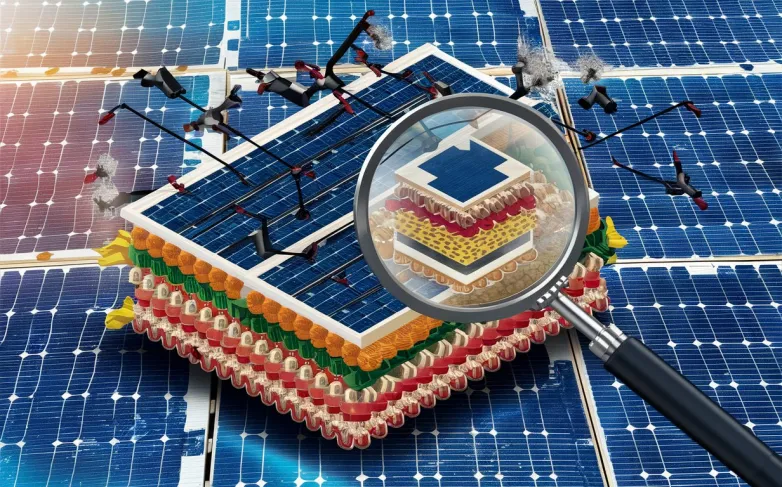Boosting Perovskite/Organic Solar Cell Efficiency with New Strategy
- Revolutionize solar energy with pseudo-halogen thiocyanate ions in perovskite/organic tandem cells, boosting efficiency and stability for long-lasting power.

Researchers have developed a strategy to enhance the efficiency and stability of perovskite/organic tandem solar cells by suppressing phase segregation in wide-bandgap perovskites. This strategy involves incorporating pseudo-halogen thiocyanate ions into mixed halide perovskites, which prevents halide elements from separating inside the solar cells and facilitates the movement of electric charge. Initial tests of this strategy resulted in tandem solar cells achieving a power conversion efficiency (PCE) of 25.82% and an operational stability of 1,000 hours.
The introduction of pseudo-halogen thiocyanate ions into wide-bandgap perovskites has shown promise in reducing energy loss and enhancing the performance of perovskite/organic tandem solar cells. This methodology could potentially be applied to a variety of wide-bandgap perovskites with different compositions, leading to the development of stable and efficient perovskite/organic photovoltaics that can operate for longer periods of time without deteriorating.
How can pseudo-halogen thiocyanate ions improve efficiency and stability of tandem solar cells?
- Pseudo-halogen thiocyanate ions help prevent phase segregation in wide-bandgap perovskites, which can improve the efficiency and stability of tandem solar cells.
- By incorporating these ions into mixed halide perovskites, the separation of halide elements is minimized, allowing for better charge transport within the solar cells.
- The use of pseudo-halogen thiocyanate ions has been shown to increase the power conversion efficiency (PCE) of tandem solar cells to 25.82% and improve operational stability to 1,000 hours.
- This strategy could potentially be applied to a range of wide-bandgap perovskites, offering a versatile solution for enhancing the performance of perovskite/organic photovoltaics.
- The introduction of these ions could lead to the development of more stable and efficient tandem solar cells that can operate for longer periods of time without degradation.
Also read
- UbiQD Secures Landmark Quantum Dot Deal with First Solar
- Astronergy Invests $53M in Tandem Solar Cell Project
- ARENA Unveils $39M Solar Innovation Funding Round
- CNNP Optoelectronics brings utility-scale perovskite modules out of the lab
- Low-Temperature Sequential Deposition Lifts Inverted Perovskite Solar Cells Efficiency Record
